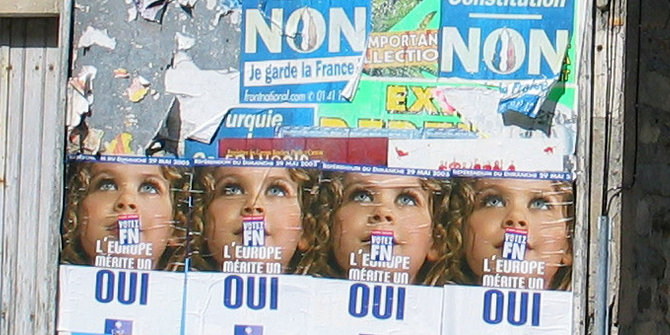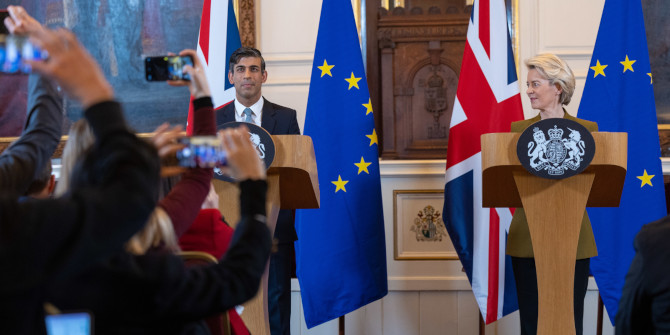 A proposed law to tighten regulations on the trade of so called ‘conflict minerals’ was backed in the European Parliament on 20 May. Christopher J. Ayres writes that while the legislation may be well-intentioned, the net effect could be to damage the interests of some of the people it is aimed at helping.
A proposed law to tighten regulations on the trade of so called ‘conflict minerals’ was backed in the European Parliament on 20 May. Christopher J. Ayres writes that while the legislation may be well-intentioned, the net effect could be to damage the interests of some of the people it is aimed at helping.
A new EU law, which was backed in the European Parliament in a vote on 20 May, makes it mandatory for companies dealing in certain minerals (Tungsten, Tin, Tantalite, Gold) that are sourced in violence-ridden Democratic Republic of Congo (DRC) to follow a process of due diligence and positively declare their products ‘conflict free’. Such products include mobile phones, laptops and other electronic devices. The new EU legislation reflects a 2010 United States law known as section 1502 of the Dodd-Frank Act (Dodd-Frank). Many advocates have rejoiced – no one wishes to see companies distributing fruits of the poisoned tree.
But to what extent were local actors and stakeholders in and around the DRC consulted? What will the law mean for the livelihood of millions in the troubled areas who survive by mining and haven’t any other means to live apart from subsistence farming, which itself is often rendered untenable? What are the actual causes of violence in the conflict-areas and to what extent do belligerents, whether rebel or government oriented (one often becomes the other) actually depend on minerals for militaristic sustenance?

To answer these questions, similar laws including Dodd-Frank and the Kimberley Process (which is designed to certify whether diamonds are conflict-free) beg consideration. So too do hundreds of adopted amendments to the original EU proposal and the international instruments of law that the EU law incorporates by reference, for example the Organisation for Co-operation and Development’s (OECD) Due Diligence Guidelines. Have the OECD Guidelines adequately addressed the fallout for miners and their families in a brief appendix?
The matter is not strictly a trade issue. It is a human rights issue, the wrongs of which may be fostered by a particularised trade. It is an issue of whether the means alleviates suffering on the ground in the DRC and similar environs or is more likely only to alleviate suffering consciences in the EU. Whether EU measures will leave residents of the DRC, people the law claims to benefit, in better shape or in the lurch without genuine alternative means of survival. Whether the law constitutes a modern form of a Western paternalism that foists harsh conditions on people in far-away places in the name of compassion. Or whether the new EU law is the remedial culmination of laborious years of championing human rights.
If we allow for the moment the latter interpretation, that the law is well intentioned and tailored to diminish if not end suffering such as killing, rape and exploitation, we can see what is in the minds of its authors by considering nearly 600 adopted amendments to the original text. For example, the amendments reveal an effort to broaden the law’s scope. The original text indicates that the law is aimed at “importers” who are responsible for conflict-exacerbating minerals ending up in roughly 400 EU smelters and refineries. “Importers” is replaced by the broader “operators”.
Similarly, a wider net is cast by replacing “Tin, Tungsten, Tantalite and Gold”, with the term “natural resources”. This opens the door for the law’s application to other possibly conflict-exacerbating “resources” including, perhaps, oil. Geographical broadening is demonstrated in referring to the specific eastern DRC region as more generally “conflict-affected, high risk areas”. “Mineral extraction” is replaced by “resource sourcing”. “Inter alia” is introduced in numerous amendments, meaning that the clause mentioned is broadened to include “among other things”, not restricted to its explicit terms. Long term policy concerns are hereby suggested, with provisions for evolving updateable blacklisted “areas” and “operators”.
Meanwhile, gender advocates in the EU parliament inserted scores of amendments with references to women and children, imbuing the proposal with a time tested imprimatur of moral legitimacy. This can have a chilling effect on challenges. Although there was ample opposition in the voting on these amendments, with 378 Members of Parliament in favour, 300 against and 11 abstentions.
If the voting was intended to end or diminish a troubling form of profiteering, the only thing worse than toxic economic activity is no economic activity. Living in the Great Lakes Region for more than a decade left me with deep experiences of overwhelming impoverishment, where a torn shirt and trousers too often amount to a person’s sole possessions.
Meanwhile, no one in particular is in possession of an estimated $24 trillion worth of tin, tungsten, tantalite and gold in the DRC’s eastern hills. No one controls the area. With control unsettled, the peaceful aims of EU legislation are a fictive dream. Moreover, were the DRC government to gain full administration of its own territory, it is as big an offender of human rights as any other group including the proxies sponsored by surrounding countries. Consolidation of the eastern region under the DRC as we know it now would promptly institutionalise violence, human rights abuses, and generate increasing venues for corruption. What’s more, wouldn’t the minerals then be labelled conflict-free, while the human rights abuses the law seeks to end continue apace?
If a law seeking to end the use of conflict-exacerbating resources is a worthwhile goal, short term suffering for the people of the DRC is the cost. But is the new EU policy likely to have a long term beneficial effect? Or will it instead be like shifting strategy to end needle exchange programmes and thus increasing the spread of HIV, while claiming that there will be fewer future narcotics abusers because drug paraphernalia won’t be as readily available to them? In other words, there are too many other factors in play.
Many factors are cited in the 2014 open-letter from seventy academics on several continents. They argue that Dodd-Frank (and by implication European Dodd-Frank endorsement and mimicry) “fundamentally misunderstands the relationship between minerals and conflict in the eastern DRC”. That “eight to ten million people across the country are dependent on artisanal mining for their livelihood”.
Likewise, critics maintain that “Congolese miners are paying to ease the consciences of Western consumers”, while only “8 percent of the country’s ongoing conflict has anything to do with natural resources”. That, moreover, “armed groups are not dependent on mineral revenue for their existence”.
The existence of the new EU law fails to distinguish itself from Dodd-Frank in terms of fallout. As for the Kimberley Process aimed at ending blood diamond proliferation, it has proven so ineffective that a chief proponent, the UK based organisation Global Witness, has withdrawn support of the process it once worked hard to bring into existence.
The European Parliament worked hard to incorporate the OECD’s Due Diligence Guidelines which include items such as assessing risks and carrying out third party audits. They are essentially the backbone of the law. It requires several steps for “operators” to undertake to “prove” their activities don’t involve conflict minerals. The OECD Due Diligence Guidelines’ 122 pages end with an 8 page Appendix entitled “Suggested measures to create economic and development opportunities for artisanal and small-scale miners”. It is hard to imagine this brief Appendix, almost an afterthought, amounts to anything meaningful for Congolese miners and dependents. Dodd-Frank lessons have gone unheeded.
For all that, requiring companies or “operators” to carry the “conflict-free” burden is not in and of itself objectionable. But with no reasonable certainty of future alleviation of suffering owing to diverse factors causing DRC violence, a “wait and see” approach is in order for EU legislative observers. Unfortunately this connotes a potential “wait and perish” scheme for many of the people the EU Parliament has set in its sights.
Please read our comments policy before commenting.
Note: This article gives the views of the author, and not the position of EUROPP – European Politics and Policy, nor of the London School of Economics.
Shortened URL for this post: http://bit.ly/1daPyQQ
_________________________________
 Christopher J. Ayres – Berlin School of Economics & Law
Christopher J. Ayres – Berlin School of Economics & Law
Christopher J. Ayres is a Lecturer in international human rights and humanitarian law at the Berlin School of Economics and Law. He is a former U.N. attorney in Rwanda during that country’s genocidal years of 1994-5, and from 1996 to 2011 directed non-profit humanitarian and human rights initiatives in the Great Lakes Region of Africa where he worked and resided for 11 years. He holds a Juris Doctorate from Harvard Law School.






Whilst I agree with Mr. Ayres’ thesis that legislations aimed at ‘conflict minerals’ from the DRC may do more harm than good, the attempt to draw some kind of a corollary with the Kimberley Process undermines the entire argument. The assertion that “As for the Kimberley Process aimed at ending blood diamond proliferation, it has proven so ineffective that a chief proponent, the UK based organisation Global Witness, has withdrawn support of the process it once worked hard to bring into existence” is without foundation except for the fact that Global Witness did have an important role in establishing the KPCS and that GW withdrew. Such a misleading and poorly informed view calls into question the validity of the remainder of the argument. Even if the assertion were true, it does nothing to support the main thesis.